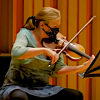
On April 2, the State of California issued its Blueprint for a Safer Economy, which updates county designations and mandates for four color-coded tiers based on the prevalence of the COVID-19 case rates and test-positivity numbers. While some of the state is still mired in the most restrictive Purple and slightly better Red tiers, numerous counties in the heavily populated San Francisco Bay and Los Angeles areas have been reassigned to the “moderate” Orange tier, which allows for more public activities and even well-regulated public performances.
While this is good news for arts presenters and live-performance mavens alike, don’t plan to jump into the mosh pit at a crowded concert anytime soon. Caveats abound, as outlined in the Blueprint and in the state’s COVID-19 guidance documents for live performances. Let’s take a look at the protocols and what we can expect to see in the way of live performances in counties with the Orange designation. The rules kick in April 15.
Audience Side

The overarching aim of the regulations is to control attendee numbers, entrance, and seating, and to minimize random mixing and visiting between household groups or pods. All venues — indoors or outdoors — share some basic rules: Attendees are limited to in-state visitors only. All tickets must be purchased in advance and delivered digitally: no paper tickets, no walk-up admission. All seating must be preassigned. All venues must provide weekly worker testing and follow rigorous cleaning/disinfecting protocols. All venues must provide at least a 12-foot barrier between performers and audience members.
Indoor venues with code-based capacity of up to 1,500 are limited to a maximum of 15 percent, or 200 people, whichever is smaller. If all guests are tested or show proof of vaccination, capacity can go up to 35 percent. For larger venues of 1,501 and above, capacity is limited to 10 percent or 2,000 people (again, whichever is smaller), with the same 35 percent allowance for fully tested or vaccinated attendees. Food and beverage service is limited to designated areas with six-feet of distancing between all guests, with no consumption in seats. There are additional requirements mandating ventilation standards, crowd control recommendations, impermeable germs barriers in public areas, and so forth. Coat-check and similar amenities are discontinued, and all swag and merchandise sales outlets must be configured to limit airborne contamination.
Outdoor venues, not surprisingly, have slightly higher allowances. Maximum capacity is 33 percent of the normal code allowance, with 67 percent allowed if all guests are tested or show proof of full vaccination. For outdoor venues, food and beverage service should be primarily in-seat concessions, with no concourse sales.

Performer Side
The state has issued extensive guidelines for musical and theatrical performers — onstage and off. These guidelines include protocols for everything from how wind players should empty their water keys to how rehearsals are conducted to wardrobe choices for performers to how sets are designed and constructed and more. In short, musicians, dancers, and actors that are used to preparing and performing cheek-by-jowl need to adapt to more limited contact and challenging impediments to smooth performing such as onstage masking for string and percussion players, more distance and Plexiglas screens between performers, and increased use of microphones for singers to encourage more limited projection, and so forth. Read our recent story about freelance musicians to get some personal insights into how these restrictions can impact performance.

Bottom Line
It remains to be seen whether these performance allowances for Orange (and with luck, eventually Yellow) tier counties will make a substantial difference for organizations presenting live music, dance, and theater. On the face of it, it seems like good news for larger organizations with access to outdoor venues that could potentially draw up to 2,000 attendees. What’s less clear is whether a 400-seat venue that has traditionally counted on full houses to break even can manage to mount live shows with a maximum audience of 60. For more on this, read Jim Farber’s story about how a number of organizations are scrambling to find workable solutions for a return to live performance.
With luck and continued vigilance, some of these restrictions be lifted within a few months. Just today, Governor Newsom issued a statement suggesting that the tier system might be history for California as soon as June 15, “if vaccine supply is sufficient for Californians 16 years and older who wish to be inoculated; and if hospitalization rates are stable and low.”
Stay tuned.




